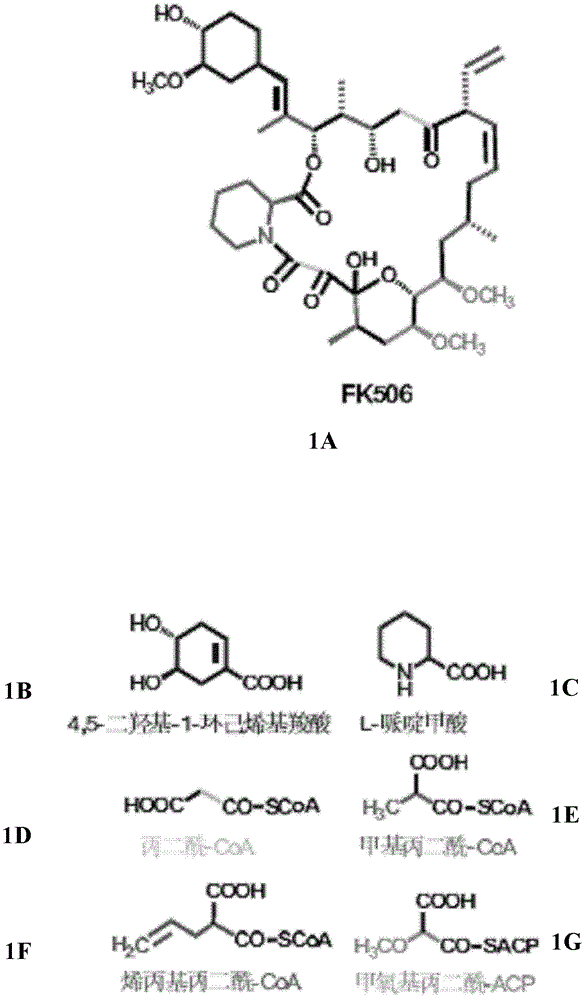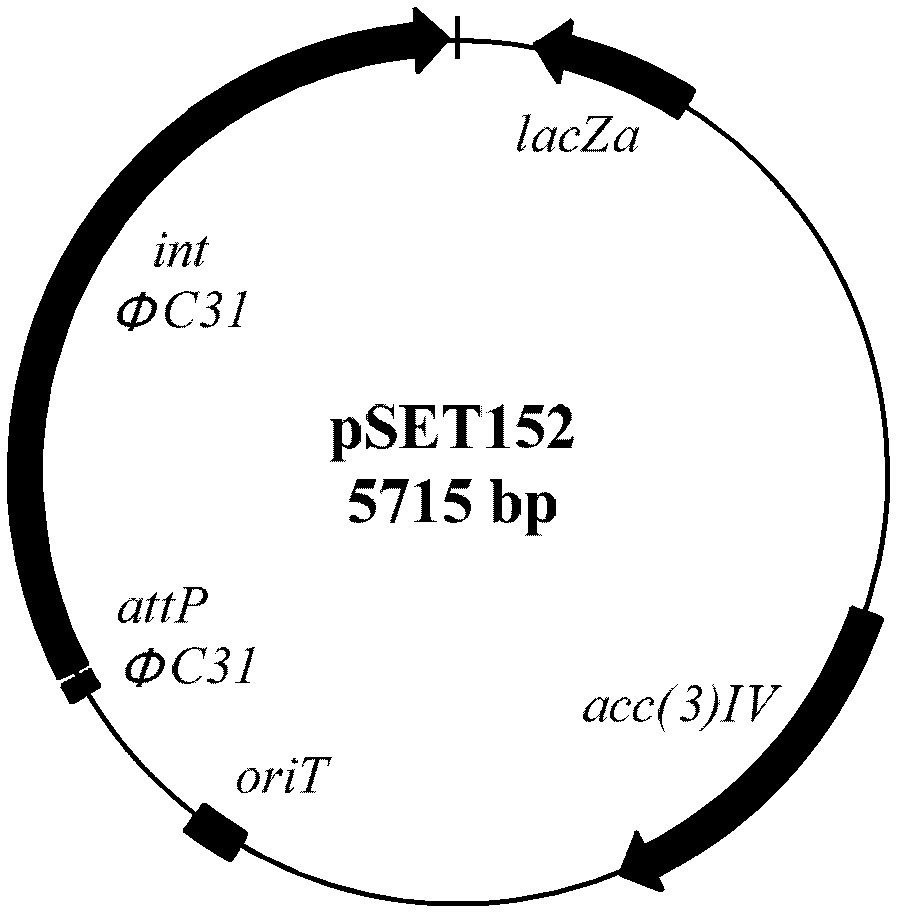Method for constructing gene engineering FK506 high-producing strain and streptomyces tsukubaensis high-producing strain
A technology of engineering strains and genes, applied in the field of biotechnology engineering, can solve the problems of unstable heritage of strains, difficult preservation, low yield, etc.
- Summary
- Abstract
- Description
- Claims
- Application Information
AI Technical Summary
Problems solved by technology
Method used
Image
Examples
Embodiment 1
[0122] Gene library construction
[0123]Based on the plasmids pSET 152 and pOJ446, the cosmid used to construct the gene library was transformed and named pJTU2554. Using the cosmid as a vector, the gene library of the starting strain ZJU506-01 was constructed.
[0124] For the structure of pSET152 see image 3 (From: Gene, 116:43-49, 1992): acc(3)IV represents the apramycin resistance gene; intΦC31 represents the phage ΦC31 integrase gene; attPΦC31 represents the DNA attachment site recognized by ΦC31 integrase in lambda phage The base sequence of point; oriT indicates the replication origin required for intergenus conjugative transfer; lacZa indicates the galactose operon gene.
[0125] The cosmid pJTU2554 structure constructed by pSET152 and pOJ446 is shown in Figure 4 . The plasmid contains the ΦC31 integrase gene sequence derived from pSET152, the phage attachment site attP sequence, part of the apramycin resistance gene acc(3)IV, the intergenus conjugative transfer...
Embodiment 2
[0127] Construction of strain CDD506-7G6 containing allylmalonyl-CoA and methoxymalonyl-ACP biosynthetic genes
[0128] The experimental idea of this example is as follows: design screening library primers, screen the gene library of FK506-producing strain ZJU506-01 from the gene library of FK506-producing strain ZJU506-01, and obtain The cosmid pJTU506-7G6 of the malonyl-ACP partial gene cluster → conjugative transfer to obtain gene multiplied zygotes → screening and verification of gene multiplied strains → fermentation verification to obtain high-yield mutants.
[0129] The specific construction steps are as follows:
[0130] 1. Screening of gene multiplication cosmid pJTU506-7G6
[0131] The screening library primers were designed, and the cosmid pJTU2554-7G6 containing the allylmalonyl-CoA and methoxymalonyl-ACP gene clusters related to the synthesis of FK506 was screened by PCR amplification.
[0132] The primer sequence of the left end screening library is:
[0133...
Embodiment 3
[0160] Construction of allylmalonyl-CoA biosynthesis-related gene cluster multiplication strain CDD506-102
[0161] The specific construction steps are as follows:
[0162] 1. Construction of gene multiplication plasmid pSET152-tcsABCD
[0163] The cosmid pJTU506-7G6 containing part of the FK506 biosynthetic gene cluster was used as a template to amplify the target gene fragment related to allylmalonyl-CoA biosynthesis by PCR.
[0164] The primers used to amplify the subgene cluster tcsA-D are:
[0165] Upstream: 5'-TACTAGTCCATCCCGATCATGCCCCTCCTG-3' (SEQ ID NO: 11)
[0166] Downstream: 5'-TTCTAGAAGGCCCTGACGCGGGACTGACC-3' (SEQ ID NO: 12)
[0167] The multiplication subgene cluster fragment was placed under the control of the strong promoter ermE* by restriction enzyme digestion, T4 ligase ligation, etc., and connected to the vector pSET152 to obtain the gene multiplication plasmid pSET152-tcsABCD( Figure 6), ermE* is a strong promoter derived from the erythromycin resistan...
PUM
 Login to View More
Login to View More Abstract
Description
Claims
Application Information
 Login to View More
Login to View More - R&D
- Intellectual Property
- Life Sciences
- Materials
- Tech Scout
- Unparalleled Data Quality
- Higher Quality Content
- 60% Fewer Hallucinations
Browse by: Latest US Patents, China's latest patents, Technical Efficacy Thesaurus, Application Domain, Technology Topic, Popular Technical Reports.
© 2025 PatSnap. All rights reserved.Legal|Privacy policy|Modern Slavery Act Transparency Statement|Sitemap|About US| Contact US: help@patsnap.com



